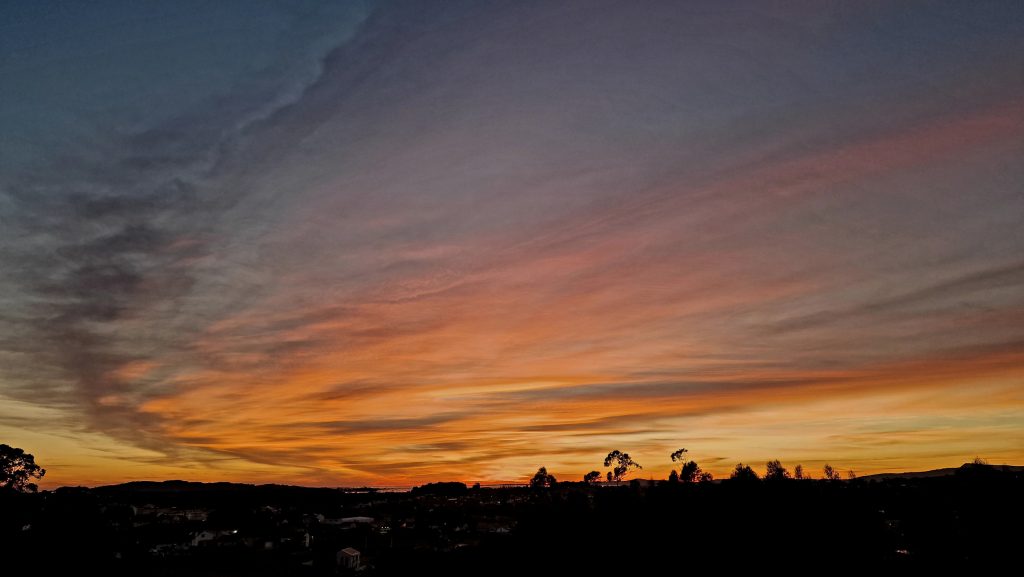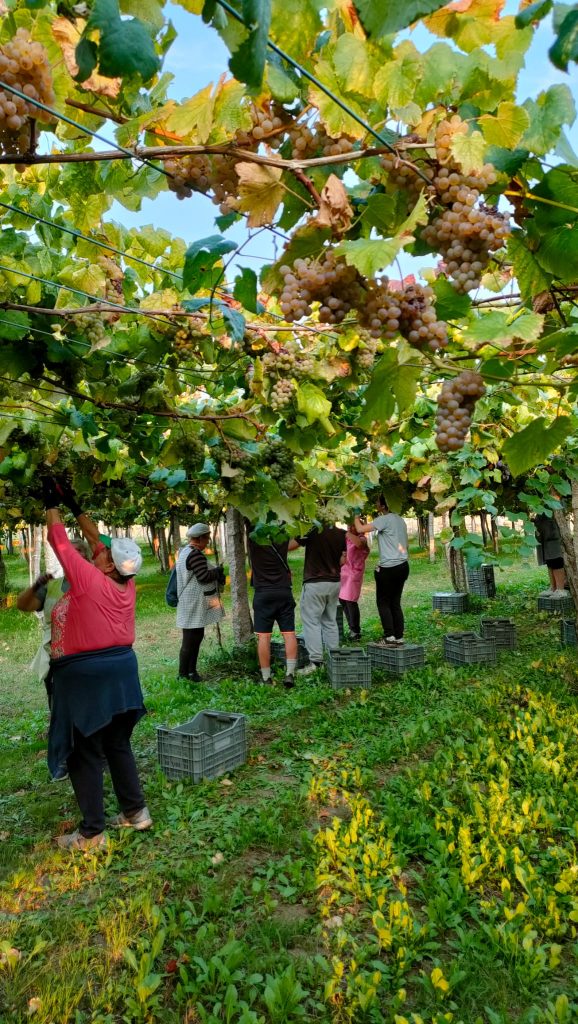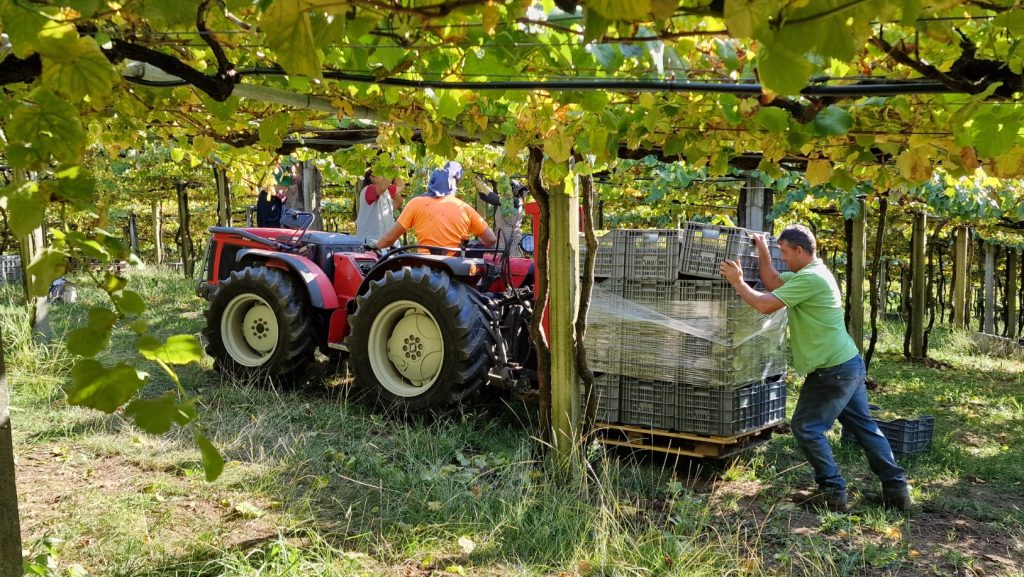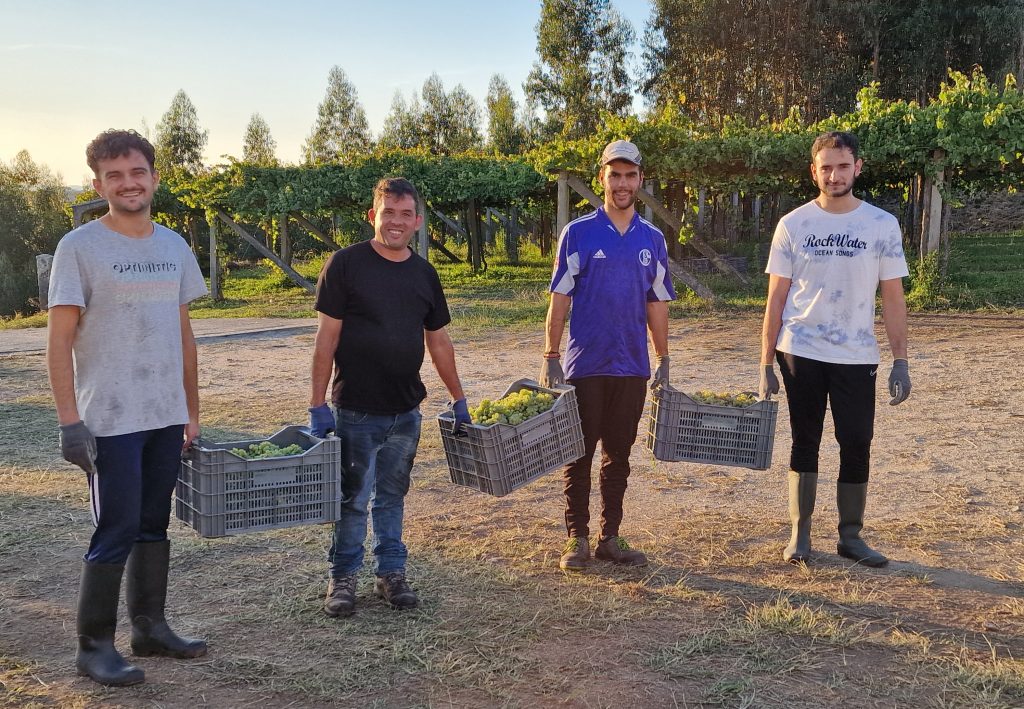Harvest 2024 Days 9, 10, 11
September 23rd, 2024 | Bodega

On Thursday evening I suffered a problem with my computer – at first it was simply a problem in uploading pictures to our social media, and then, by Friday, I had no access to social media at all, and needed to wait until today for IT support. Whatever the problem it has now been resolved and so I will make a quick summary of the last few days.
Friday 20th – Day 9
Not the best day weather wise. We started the morning with a heavy fog/sea mist which, during the morning deteriorated into a fine drizzle of rain. As we were nearing the finish line, and the rain was barely enough to penetrate the canopy, we decided to continue. In the end it proved to be a good decision, in that, as the day progressed, the weather dried up completely. Despite these slightly complicated conditions, the fruit was still good quality, and was not affected by the recent downturn in conditions.
Saturday 21st – Day 10
A washout! The morning started with rain, albeit not heavy. As our teams were all beginning to tire, we decided not to pick at all. During the afternoon the rain stopped and the sky cleared, meaning that the last fruit would at least be dry for the following day.
Sunday 22nd – Day 11
Our last day, collecting the final grapes of our 2024 harvest, and thankfully the weather is dry and sunny! (Just as well, the forecast for the coming days is rain, rain and more rain!). It seems that this year we will probably end up with a slightly larger harvest than last year, and despite all the difficulties earlier in the year (and in the final days before we started), it seems that we will probably end up with a good quantity of good quality fruit (albeit that I never like to pre-judge at this early stage). Clearly, with our tanks now rapidly filling, or already full, the balance of our workload is now shifting indoors, towards the bodega itself.
In the coming days I will comment more about our winemaking, as the grapes finally start to reveal their 2024 character and potential.







